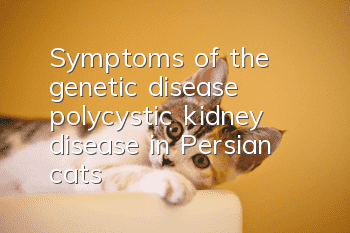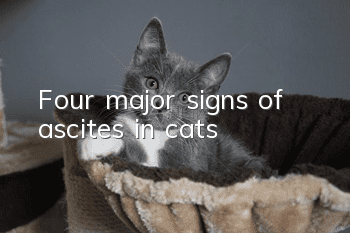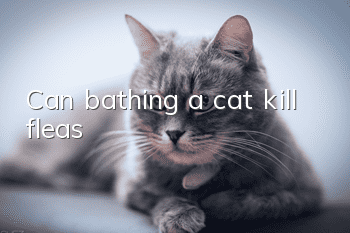Symptoms of the genetic disease polycystic kidney disease in Persian cats

We often say that folded-eared cats have various hereditary diseases. In fact, it is not just folded-eared cats. Cats of different breeds have more or less common hereditary diseases. Some people say that American Shorthairs rarely get sick, but many American Shorthairs also suffer from congenital heart diseases. Persian cats are also troubled by a genetic disease, which is polycystic kidney disease, and the chance of curing this disease is very low.
1. What is polycystic kidney disease
Somatically dominant polycystic kidney disease is an autosomal dominant genetic disease; it can occur in humans, cats, dogs, and other animals. It began to appear in literary reports in 1969, but formal scientific research did not begin until 1990. Feline polycystic kidney disease mostly occurs in Persian cats or cats with Persian cat ancestry. Cats with problems will form fluid-filled sacs in the renal cortex. These fluid-filled sacs will gradually compress other tissues of the kidney, causing kidney tissue necrosis and chronic renal failure.
2. Can polycystic kidney disease cause kidney failure
Eighty-five percent of the causes of renal failure are caused by mutations in the polycystic kidney gene; about 38% of Persian cats in the world suffer from polycystic kidney disease—that is, polycystic kidney disease in the world About 6% of cats suffer from polycystic kidney disease.
3. Does polycystic kidney disease only occur in Persian cats?
Although PKD is mostly prevalent in Persian cats, approximately 7% of non-Persian and exotic cats are positive for the abnormality. A 2004 research report pointed out that among the 48 cats suffering from this disease, in addition to 41 Persian cats, the others included Siamese cats, Ragdoll cats, short-haired domestic cats, and other known outcrosses with Persian cats. Breeds such as exotic short-haired cats, American curly cats, Scottish fold cats, and Himalayan cats have been detected to have polycystic kidney gene mutations, and the genotypes of this dual gene all show a "heterozygous" combination. "Additionally, the mutated gene is clearly isolated in all available polycystic kidney pedigrees, and cats without the disease do not have mutations in the polycystic kidney gene - which is normal."
4. What are the symptoms of Persian cats with polycystic kidney disease
No symptoms. Only when polycystic kidney disease develops enough to cause kidney tissue necrosis to form chronic renal failure, symptoms become apparent, namely weight loss, loss of appetite, increased thirst, increased urination, lack of energy, and vomiting. And the symptoms related to kidney failure are not unique to polycystic kidney disease.
5. Is polycystic kidney disease fatal?
Some polycystic kidney disease-positive cats will die from other non-polycystic kidney disease causes. It is theoretically possible that polycystic kidney disease-positive cats will eventually develop renal failure and die. However, in practice, the cause of death in some polycystic kidney-positive cats is caused by other non-polycystic kidney diseases.
6. How to treat cats with polycystic kidney disease
There is currently no specific and effective treatment for this disease. It is a progressive, irreversible kidney disease; current treatments are similar to those for other conditions that cause chronic kidney failure. This treatment involves controlling the portion of protein consumed: consuming proteins of high biological value to control moderate protein intake; controlling the portion of phosphorus consumed: always providing fresh drinking water with phosphate binders to control the phosphorus content in the diet , to reduce serum phosphorus concentration; vitamin D supplementation, and treatment of anemia, such as erythropoietin injection, when necessary. Veterinarians and breeders also need more research into the causes and effective treatments.
- Can cats drink milk powder? Why should cats drink goat milk powder?
- What is the difference between 10 yuan and 100 yuan cat food?
- How old are Chinese civet cats for weaning?
- What should I do if the key color shorthair cat is very aggressive?
- What do you need to prepare for raising a kitten?
- Why do cats bring bugs to their owners?
- Comparison between bentonite cat litter and pine cat litter
- Does neutering a male cat mean cutting off its balls?
- Can cats eat fusilli?
- What is the longest life span of a cat? How many years is the longest life span of a cat?



